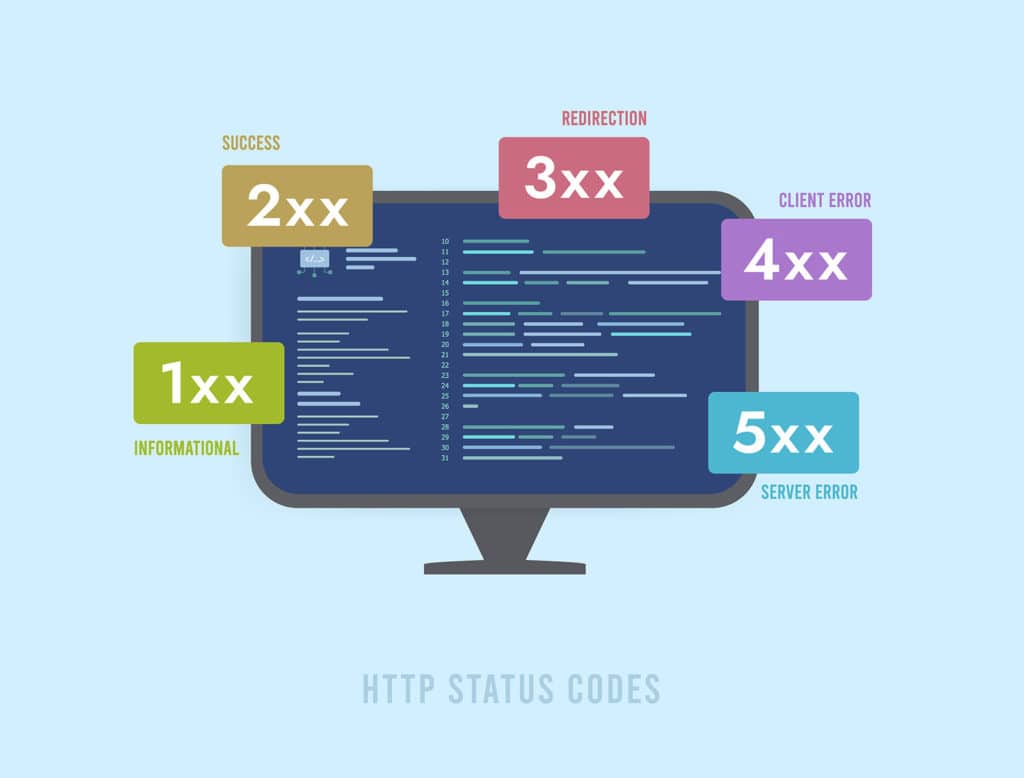Have you ever heard of the terms redirect status response codes, HTTP method, target resource, content-type, charset, enclosed uris or Uniform Resource Identifier, and other web-related terms when it comes to web development? However, you’re not that tech-savvy guy and knowledgeable enough but you’re interested in learning this idea.

In this blog post, we are going to unfold the idea of redirect status response code 308 and how it can help you in developing your web.
Let’s start with its definition.
HTTP status code 308, also known as Permanent Redirect, is used to inform clients that a particular resource has been moved permanently to a new location, as specified in the Location header of the server’s response. This status code is ideal for situations when clients should always access the new location, as it prevents them from using the outdated URL. Understanding how the 308 status code functions and its implications for web clients and developers can be crucial for seamless website navigation and efficient SEO practices.
Although the 308 status code shares similarities with other redirection status codes, such as 301 (Moved Permanently), it is more strict in terms of client behavior. While both codes inform clients about the new permanent location of a resource, the 308 status code requires that all future requests follow the new URI, maintaining the request method and payload of the original request. This allows for greater control and consistency compared to the 301, which may allow changes in the request method.
Table of Contents
- Key Takeaways
- Understanding HTTP Status Codes
- The Role of HTTP 308
- Comparison with Other Status Codes
- Technical Elements of 308 Code
- Interaction with Web Browsers and Servers
- Code 308 and SEO
- Implications for Clients and Users
- Considerations for Developers
- Integrating 308 in Web Applications
- Concluding Thoughts and Future Recommendations
- Frequently Asked Questions
Key Takeaways
- The 308 status code indicates a permanent redirect for a requested resource, providing its new location in the server’s response.
- Compared to other status codes like 301, the 308 is more strict, maintaining the request method and payload for all future requests to the new location.
- Understanding the implications of code 308 for web clients, developers, and SEO practices can help create seamless navigation and efficient web applications.
Understanding HTTP Status Codes

HTTP (Hypertext Transfer Protocol) status codes are three-digit numbers that indicate the outcome of an HTTP request. These codes are grouped into five classes, identified by the first digit of the code: informational (1xx), successful (2xx), redirection (3xx), client error (4xx), and server error (5xx).
In this section, we will focus on redirection status codes, particularly the 301, 302, 307, and 308 ones. Redirection codes inform the client that further action is needed to complete the request. They are used to indicate that a resource has been moved, temporarily or permanently, to a new location.
- 301 Moved Permanently: This indicates that the resource has been permanently moved to a new URL, and all future requests should be directed to the new location. This status code is useful for updating search engine indexes and bookmarks.
- 302 Found: Previously known as “Moved Temporarily,” this status code is used for temporary redirects. The original URL should still be used for future requests, and search engines should not update their indexes to the new URL.
- 307 Temporary Redirect: Introduced in RFC 7231, this status code is similar to 302 but does not allow the request method to change from POST to GET. This ensures that the exact same request is made to the new URL.
- 308 Permanent Redirect: Added to the HTTP standard in RFC 7538, the 308 status code signifies a permanent redirect, similar to code 301. However, it also maintains the same request method as the original request, unlike the 301 status code.
Understanding the differences between these status codes helps web developers and server administrators effectively manage resources, handle site migrations, and optimize search engine indexing. Using the appropriate redirection status code will ensure that both web browsers and search engines handle the redirect in the desired manner.
The Role of HTTP 308

HTTP response status codes play a crucial role in informing both clients and servers about how requests and responses are being processed. Among these status codes, the 308 Permanent Redirect has a specific function in the HTTP redirection process. Let’s take a closer look at the role of HTTP 308 in the world of web communication.
The 308 Permanent Redirect is an HTTP response status code that indicates the requested resource has been permanently moved to another URI. This status code is used when the server wants all future requests for the original resource to be directed towards the new location, as provided in the Location header of the HTTP response.
There are several instances where an HTTP 308 might be employed:
- When a web page or resource has been moved to a new location permanently.
- If the server wants to redirect request methods (such as POST, PUT, or DELETE) to another location without changing the request methods.
- To maintain consistency with the original request’s content for SEO, sitemaps, and linking purposes.
Comparing it to other HTTP response status codes, the 308 Permanent Redirect is similar to the 301 Moved Permanently code, with a key distinction: the 308 status code ensures that the request method and the request body remain unchanged during the redirection process. This property helps maintain the integrity of the original request, especially during actions like form submissions or file uploads.
Using HTTP 308 can have a positive impact on search engine optimization (SEO) since it helps search engines update their indexing with the new resource location. Additionally, the 308 status code signals that the “link juice” should be forwarded to the new URL, preserving the original resource’s ranking in search engine results.
In summary, the Http 308 response status code plays a vital role in maintaining seamless and reliable web communication when resources are permanently moved. This status code ensures that the original request’s nature is preserved, contributing to better user experiences and optimized search engine performance.

Comparison with Other Status Codes
HTTP status codes play a crucial role in the communication between a client and a server. In particular, the 3xx series of status codes informs the client that further action is required to complete the request, typically in the form of a redirection. This section provides a brief comparison of the 308 Permanent Redirect with other common 3xx status codes, notably the 301, 302, and 307 codes.
308 Permanent Redirect is used when a resource has been permanently moved to another location. This status code indicates that all future requests by the client should be directed to the new URL provided in the Location header. The 308 status code maintains the same request method and request body between the original and subsequent requests.
In contrast, the 301 Moved Permanently status code also signifies that a resource has been permanently moved to a new location. However, unlike the 308 status code, the 301 code may not always preserve the original request method, especially in older clients. For example, a POST request may be changed to a GET request during the redirection process. More details about the 301 redirect can be found in the linked article.
The 302 Found status code informs the client that the resource has been temporarily moved to a new location, and the original request method may or may not be maintained during the redirection. Clients using HTTP/1.1 are more likely to preserve the request method, but older clients may still change it. This status code should be used when the resource relocation is temporary. To learn more about the 302 status code, refer to this Baeldung article.
Lastly, the 307 Temporary Redirect status code also indicates a temporary relocation of the resource. The critical difference between the 302 and 307 codes is that the 307 status explicitly mandates clients to maintain the original request method during the redirection process. This preservation of the request method is essential in cases where changing the request type would result in undesirable consequences. For more information about the 307 temporary redirect, consult the MDN Web Docs.
In summary, each of the aforementioned status codes serves a unique purpose in managing server-client interactions with respect to resource relocation. Understanding the differences can help developers implement more effective and efficient communication protocols within their web applications.

Technical Elements of 308 Code
The 308 code is a lesser-known status code in the realm of web development, closely related to redirection, as it covers several important aspects related to Uniform Resource Identifier (URI) handling. It is essential to understand various key elements of the 308 status code to utilize it effectively.
When a server receives an HTTP request with a specific request method such as GET or POST, it can return a 308 status code response if the current request URI is deprecated or has moved permanently to a new location. The 308 code informs the client to update their records and interact with the new URI in the future.
To redirect the client to the new location, the server includes a Location header in the response containing the location field value, which represents the effective request URI. This location field value specifies the new Uniform Resource Identifier (URI) where the requested resource now resides. Including this header prevents clients from resending requests to outdated resources and speeds up the redirection process.
An essential aspect of the 308 code’s technical implementation is its cache behavior. The server can enforce cache controls to ensure that the client stores the redirection information for future requests. It can help reduce the load on the server by decreasing redundant requests and improve the overall efficiency of the system.
Additionally, the User-Agent header can provide important insights into the client’s device type and capabilities. Servers use this header to serve device-specific content, improving the browsing experience.
In summary, the 308 code plays a crucial role in managing redirections for permanent URI changes. By understanding its various aspects, such as request methods, Location headers, and cache controls, web developers can effectively implement and utilize this status code to ensure seamless resource access and improved web performance.

Interaction with Web Browsers and Servers
When a 308 Permanent Redirect status is encountered, web browsers and servers react differently. Web browsers such as Google Chrome, Firefox, and Microsoft Edge handle the 308 redirects properly, whereas older versions of Internet Explorer may experience issues. For example, IE 11 on Windows 8.1 seems to hang and not load anything.
Web servers like Apache and Nginx can be configured to handle 308 redirects. In Apache, redirects can be specified in the .htaccess file or the server configuration files. For instance, to implement a 308 redirect in Apache, you can add the following line to the .htaccess file:
Redirect 308 /old-resource /new-resourceSimilarly, for Nginx, you can create a 308 redirect by adding the following line to the server block within the Nginx configuration file:
rewrite ^/old-resource$ /new-resource permanent;In server-side web applications, 308 redirects can be programmatically triggered by setting the appropriate HTTP headers. For example, in PHP, you would use the following code:
header("HTTP/1.1 308 Permanent Redirect");header("Location: /new-resource");Web applications may utilize JavaScript to modify the DOM and create client-side redirects. However, this is not recommended for the 308 Permanent Redirect, as it is not recognized by search engines and is essential for the proper functioning of the application. It is advised to keep the 308 redirects within the server-side configurations and programming.
In summary, implementing a 308 Permanent Redirect requires the correct configuration of web servers such as Apache or Nginx and adjustments in server-side web applications. Proper handling of these redirects ensures seamless interaction between web browsers, servers, and user experience.

Code 308 and SEO
A 308 Permanent Redirect is an HTTP response status code that indicates a resource has permanently moved to a new URL. Just like other HTTP status codes, such as the well-known 404 error, this code plays a significant role in SEO by informing search engines and their crawlers about the relocation of a URL.
One important aspect to consider when comparing the 308 redirects with the more common 301 redirects is that a 308 redirect requires the client to repeat the exact same request, whether it is a POST or GET, using the new URL. In contrast, a 301 redirect does not impose this requirement. This subtle difference can impact how search engines index and transfer ranking signals, making it crucial for SEO specialists to be aware of the proper usage of each redirect type.
In terms of SEO impact, there is still some uncertainty about how much page authority a 308 redirect transfers. Given this lack of clarity, it is generally advisable for SEO professionals to opt for a 301 redirect whenever possible. This is because 301 redirects have a well-established reputation for successfully passing on ranking signals and preserving link equity, ensuring that search engine algorithms continue to recognize the value of the redirected content.
However, it is essential to properly implement 308 redirects when necessary to avoid potential issues with search engine crawlers in specific situations. For example, a poorly executed 308 permanent redirect could lead to duplicate content or dead links, negatively affecting the website’s SEO performance. To avoid such issues, it is crucial to monitor and continually tweak the website’s redirects, ensuring that search engines can accurately index the content and provide users with the most relevant search results.
In conclusion, 308 permanent redirects are not as widely used as 301 redirects, but they are important in maintaining a website’s SEO performance during relocations or modifications. Properly managing and implementing 308 redirects can help websites continue to rank well in search engine results and maintain a positive user experience.

Implications for Clients and Users
When a client or user agent encounters a 308 Permanent Redirect status code, it is crucial to understand its implications on the user experience and application services. Clients and user agents should be aware of the definitive relocation of the requested resource to a new URL, as specified by the Location header.
Client-side applications, including browsers, typically handle an automatic redirection of 308. They redirect users to the new URL without any additional input or acknowledgment. This automated process ensures a seamless user experience. However, some outdated browsers may not recognize the 308 status code, affecting a small portion of users (less than 5% of desktop users).
As for service providers, they should be aware of the requirements and best practices for implementing 308 redirects:
- Update internal links to point to the new URL.
- Communicate with external link providers to inform them of the URL change.
- Monitor the performance of redirected resources to ensure minimum impact on client applications.
Developers should recognize that a 308 Permanent Redirect affects search engines, as they will update their links to direct users to the new URL. This is considered a positive impact on search engine optimization (SEO), as the “link-juice” is transferred to the new URL.
When properly implemented, a 308 Permanent Redirect can maintain an uninterrupted user experience and successfully transition client applications and user agents to the new resource location.

Considerations for Developers
When implementing a 308 Permanent Redirect in your applications, there are several key aspects that developers must take into account to ensure proper functioning and adherence to best practices.
Firstly, developers should be aware that a 308 Permanent Redirect signals that the requested resource has been permanently moved to another URI, as indicated by the special Location header returned within the response. It is essential to include this header in the response, as it provides the new URL where the resource can be found.
In contrast to other redirect codes, such as the 307 Temporary Redirect, a 308 Permanent Redirect tells search engines and clients to update their references to the original URL. This is an important distinction for developers to keep in mind, especially when dealing with resources that may be indexed by search engines.
When processing various HTTP requests, it is essential to understand the implications of using a 308 Permanent Redirect. For example, both POST requests and PUT requests must be handled correctly. A 308 Permanent Redirect preserves the original request method; therefore, a POST request will remain a POST request, and a PUT request will remain a PUT request. Developers must ensure that the server handling the redirected URL is capable of processing the same request method.
To utilize a 308 Permanent Redirect effectively, developers should:
- Use a 308 Permanent Redirect when the resource has been permanently moved to a new location.
- Include the Location header in the response.
- Ensure the server handling the new URL is capable of processing the original request method.
On the other hand, developers must not:
- Use a 308 Permanent Redirect for resources that have temporarily moved.
- Omit the Location header in the response.
- Ignore the handling of POST and PUT requests when implementing a 308 redirect.
By following these guidelines, developers can confidently implement a 308 Permanent Redirect in their applications, ensuring a clear and neutral handling of resources that have been permanently moved to a new location.
Footnotes
- https://blog.airbrake.io/blog/http-errors/308-permanent-redirect
- https://developer.mozilla.org/en-US/docs/Web/HTTP/Status/308
- https://robotecture.com/http-308-permanent-redirect-the-ultimate-guide/

Integrating 308 in Web Applications
When developing a web application, it’s essential to properly handle HTTP status codes. One such code is the 308 Permanent Redirect. This status code indicates that the requested resource has been permanently moved to another URI, as specified by the “Location” header in the response.
To integrate the 308 status code into web applications, developers should first understand its use cases. The primary use case is to guide clients, such as search engines and browsers, to the new location of the permanently moved resource. This allows clients to update their references for the resource, ensuring that future requests are directed to the correct location.
In addition to its primary use, some web applications employ the 308 redirect in a non-standard manner. For example, Google Drive uses a 308 “Resume Incomplete” response to indicate when an incomplete upload has stalled. This highlights the importance of understanding the specific requirements and functionalities of your web application when implementing the 308 status code.
To implement the 308 Permanent Redirect, developers need to include the new URI in the “Location” header of the HTTP response. The table below provides a sample of how a 308 response would look like:
HTTP/1.1 308 Permanent RedirectLocation: https://example.com/new-uriDevelopers should also ensure that their web applications correctly handle both GET and POST requests associated with 308 redirects. While GET requests are more common, 308 can be utilized in response to a POST request as well.
Integrating the 308 Permanent Redirect into your web application can significantly improve its performance, user experience, and search engine indexing. To achieve this, make certain that your application utilizes the status code correctly, adheres to its use cases, and thoroughly tests its functionality.
Footnotes
- https://developer.mozilla.org/en-US/docs/Web/HTTP/Status/308
- https://blog.airbrake.io/blog/http-errors/308-permanent-redirect
- https://www.devdoc.net/web/developer.mozilla.org/en-US/docs/Web/HTTP/Status/308.html
- https://stackoverflow.com/questions/53436107/is-there-still-a-use-case-for-http-301-rather-than-http-308-to-indicate-that-a-r

Concluding Thoughts and Future Recommendations
Code 308 has certainly been influential in its domain. To improve its application, it is recommended to invest in continuous development and adopt the best practices. One way to achieve this is by conducting regular assessments and remaining up-to-date with the latest industry standards.
From a value perspective, it is crucial to recognize the importance of this code in streamlining processes and enhancing overall efficiency. Organizations that leverage code 308 can expect to see tangible benefits in their operations. To fully realize its potential, it is advised that users pay close attention to implementation details and seek expert guidance where necessary.
- Required efforts should be made to ensure that all parties involved in the utilization of code 308 fully understand its intricacies and are equipped to address any challenges that may arise. This includes thorough training and access to comprehensive documentation.
- To improve the operational benefits of code 308, it is essential that implementation is done accurately and consistently. This can be achieved by following the established guidelines and seeking assistance from experienced professionals in the field.
In conclusion, code 308 plays a vital role in its respective field, and its significance should not be underestimated. By adopting the recommended practices, ensuring the required level of understanding, and fully recognizing its value, organizations can effectively improve their processes and benefit from its advantages.
Frequently Asked Questions
How to resolve a 308 Permanent Redirect?
What does a 308 error code mean in Flask?
What are the differences between 301 and 308 status codes?
How to configure 308 Permanent Redirect in nginx?
How to implement 308 Permanent Redirect in Spring Boot?
What are the key distinctions between HTTP 302 and 308?
Published on: 2023-11-22
Updated on: 2024-06-16